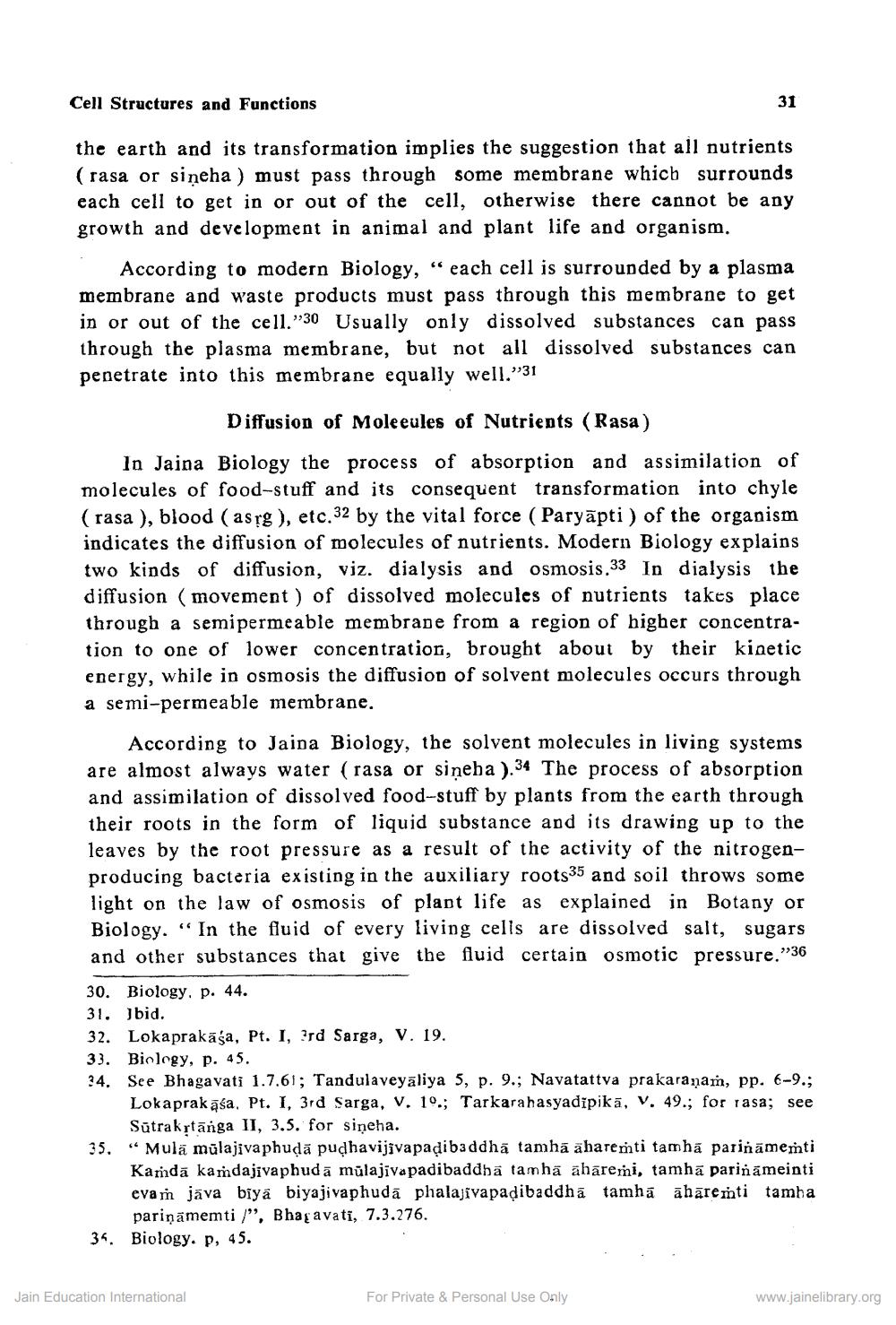________________
Cell Structures and Functions
31
the earth and its transformation implies the suggestion that all nutrients (rasa or sineha ) must pass through some membrane which surrounds each cell to get in or out of the cell, otherwise there cannot be any growth and development in animal and plant life and organism.
According to modern Biology, “each cell is surrounded by a plasma membrane and waste products must pass through this membrane to get in or out of the cell.”30 Usually only dissolved substances can pass through the plasma membrane, but not all dissolved substances can penetrate into this membrane equally well.”31
Diffusion of Moleeules of Nutrients (Rasa)
In Jaina Biology the process of absorption and assimilation of molecules of food-stuff and its consequent transformation into chyle (rasa ), blood (asrg ), etc. 32 by the vital force (Paryāpti) of the organism indicates the diffusion of molecules of nutrients. Modern Biology explains two kinds of diffusion, viz. dialysis and osmosis.33 In dialysis the diffusion (movement) of dissolved molecules of nutrients takes place through a semipermeable membrane from a region of higher concentration to one of lower concentration, brought about by their kinetic energy, while in osmosis the diffusion of solvent molecules occurs through a semi-permeable membrane.
According to Jaina Biology, the solvent molecules in living systems are almost always water (rasa or sineha ).34 The process of absorption and assimilation of dissolved food-stuff by plants from the earth through their roots in the form of liquid substance and its drawing up to the leaves by the root pressure as a result of the activity of the nitrogenproducing bacteria existing in the auxiliary roots35 and soil throws some light on the law of osmosis of plant life as explained in Botany or Biology. “In the fluid of every living cells are dissolved salt, sugars and other substances that give the fluid certain osmotic pressure.'36
30. Biology. p. 44. 31. Jbid. 32. Lokaprakāśa, Pt. I, ?rd Sarga, V. 19. 33. Biology, p. 45. 34. See Bhagavati 1.7.61; Tandulaveyaliya 5, p. 9.; Navatattva prakaraṇam, pp. 6-9.;
Lokaprakāša. Pt. I, 3rd Sarga, v. 19.; Tarkarahasyadipikā, V. 49.; for rasa; see
Sūtrakrtānga II, 3.5. for sineha. 35. “Mulā mūlajivaphudā pudhavijivapadibaddhā tamhā āharemti tamhá parināmemti
Kardā kamdajivaphudā mūlajivapadibaddhā tamhä ahāremi, tamhā parināmeinti evam jāva biya biyajivaphudā phalajivapadibaddhā tamhā āhāremti tamba
pariņāmemti /", Bhagavati, 7.3.276. 34. Biology. p, 45.
Jain Education International
For Private & Personal Use Only
www.jainelibrary.org




